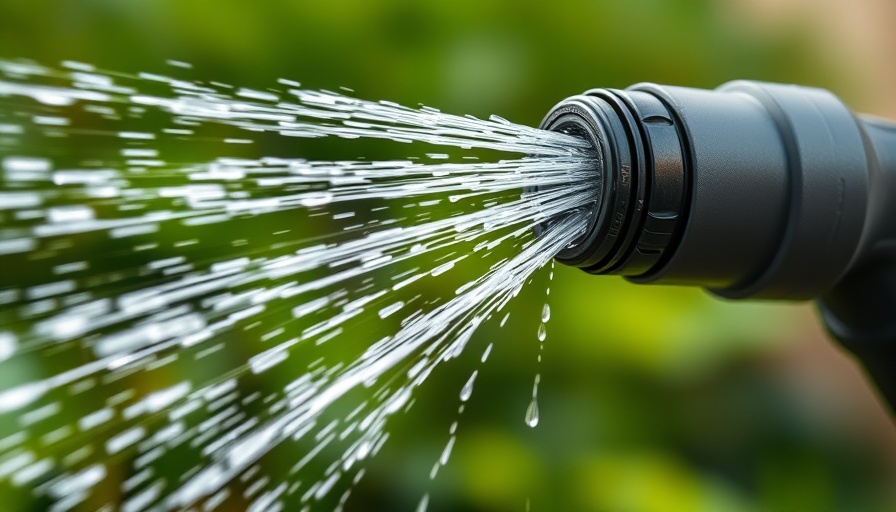
Why Timing Matters in Plant Watering
Watering plants may seem straightforward—just turn on the hose and wet the soil, right? However, the timing of this crucial task can greatly impact the health of your garden. Watering at inappropriate times not only limits plant growth but can also promote diseases that can harm your beloved greenery. So, when is the best time to water plants? The short answer is, early morning is ideal, but it varies by season, soil type, and plant species.
Morning: Your Garden's Best Friend
The first light of day is when you want to be watering your plants, ideally before 10 AM. During this time, cooler temperatures allow water to soak into the ground more effectively, minimizing evaporation. Research indicates that plants absorb water most efficiently in the morning, ensuring they have the hydration they need throughout the day. Additionally, watering at this time helps prevent the onset of fungal diseases, which thrive in damp conditions that occur overnight.
When to Avoid Watering: Midday and Night
While the morning may be the golden hour for watering, the opposite is true for midday and late night. Watering during the heat of the day can lead to rapid evaporation, wasting your precious resources while failing to adequately hydrate your plants. Additionally, if droplets land on leaves, they can act like magnifying glasses and scorch your foliage.
On the other end of the spectrum, watering at night may seem convenient, but it presents a different set of problems. Plants left soaking overnight can develop fungal growth and mold due to the extended moisture, creating a perfect breeding ground for diseases.
Adapting to the Seasons: The How and When
Throughout the seasons, our watering strategies must evolve to match the changing needs of our plants. During the vibrant months of spring and summer, warmer temperatures necessitate more frequent watering, especially for new shrubs and lawns. A good rule of thumb is to dig your fingers into the soil: if the top inch is dry, it’s time to bring out the hose.
As temperatures drop in fall, plant water demand decreases, but trees and shrubs still crave moisture to prepare for the winter. In winter, while most plants enter dormancy, it's crucial to remember that evergreens and container plants still require occasional watering during dry spells.
Watering Techniques for Optimal Growth
Understanding when to water is just one piece of the puzzle. Here are some techniques to ensure your plants thrive:
- Water Deeply: Don’t just wet the surface; ensure that at least 6 inches of soil is saturated to encourage robust root development.
- Use Mulch: A 2-3 inch layer of mulch not only regulates soil temperature but also prevents moisture loss and suppresses weeds competing for nutrients.
- Consider Drip Irrigation: Installing a drip irrigation system or soaker hoses delivers water directly to the roots, reducing waste and promoting healthy plant growth.
Taking the Next Steps for Your Garden
Now that you’re equipped with the best times and techniques for watering, consider how implementing these strategies can lead to a thriving garden. observe how your plants respond, and adjust your methods accordingly. A well-hydrated plant is not just a matter of routine but ensures the vibrancy of your outdoor space. Don't wait until your plants droop; act now to make your garden a green paradise.
 Add Row
Add Row  Add
Add 




Write A Comment